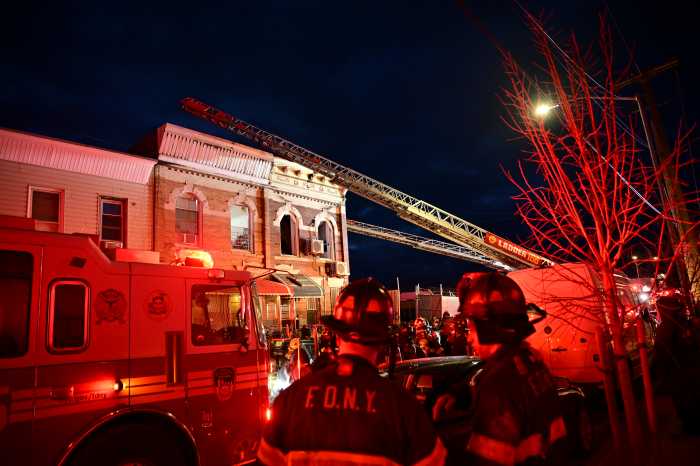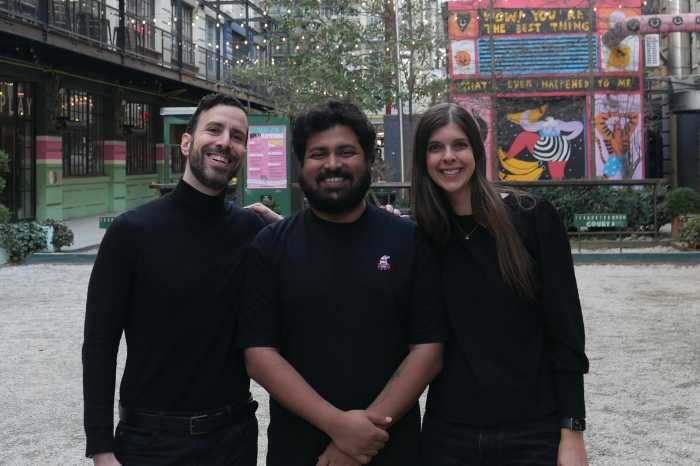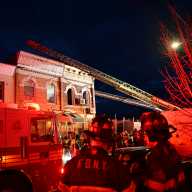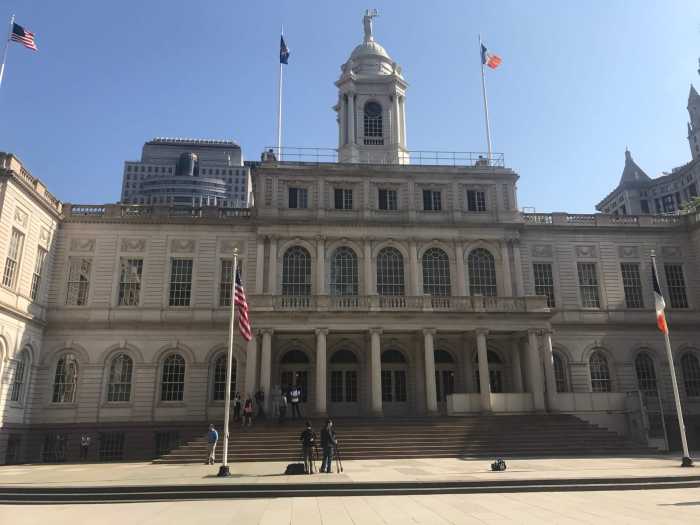Hurricane Sandy turned a Coney Island Houses apartment building into a putrid, 14-story pile of rotting garbage that’s making people sick, say tenants who claim that the city has done nothing to fix a building trash compactor destroyed in the October super storm.
Residents of the city housing authority apartment building on W. 32st Street between Surf Avenue and the Boardwalk say trash has been left rotting in the garbage chutes — which run through the entire building — ever since Hurricane Sandy left the basement trash compactor inoperable.
Building managers ultimately locked trash chute doors, preventing any more garbage from getting stuck, and left black bags in the hallways for household trash. But it didn’t take long for the bags to be overflowing with garbage — creating an ungodly odor that permeated the entire facility, say tenants who say they’re now suffering from respiratory problems.
“This smell is unbelievable. It’s like something died,” said Steven St. Bernard, a Metropolitan Transit Authority employee hailed as a hero earlier this year when he grabbed a young girl falling from a third-story window. St. Bernard says his daughter was rushed to the hospital when she had difficulty breathing last week.
“She woke up gagging,” said St. Bernard, who feels the city should have done more to aerate his building’s windowless halls. “They should have opened up the roof vents and blown this all out right away.”
But St. Bernard’s daughter isn’t alone. Tenants say maintenance workers are dousing hallways with products that mask the smell, but the filth remains piled high both inside and outside the building.
“They really need to do more to clean this place up,” said Sonia Reeves, who reported seeing maggots crawling around the garbage bags on the building’s sixth floor, and has applied to be transferred because of her asthma. “They should get more people in here.”
Reeves’s neighbor Shanna Estevez said her mother was hospitalized with severe shortness of breath last week. Estevez has also taken ill: she’s been diagnosed with reactive airway disease, an asthma-like syndrome that develops after exposure to irritating vapors.
“How long will we be breathing this in before they clean it?” Estevez said. “We have children in this building.”
Others fear that the sand and sediment Hurricane Sandy deposited outside the building — which the Housing Authority has not removed — may be contaminated.
“It’s right by the front of the building, and everybody’s tracking it in all the time,” said Maryanne DeBenedetto, who is suffering from bronchitis, and who says her dog has been vomiting in the mornings.
A city housing authority spokesman said the compactor has been repaired and a maintenance crew “removed a considerable amount of garbage that had been trapped when it was inoperable,” but the chutes were still locked when this reporter visited the building on Thursday.
Still, city officials say garbage won’t be piling up in building hallways any longer.
“The garbage bags in the hallways were there because of the inoperable compactor that is now working,” the spokesman said. “Residents can return to using the compactor.”
But it will take a little longer for the sand piled outside the building to be removed, the spokesman admitted.
“The sand has been removed from the walkways at the development and we are in the process of gathering equipment and operators to remove the remaining sand on the grass areas.”
Studies have found that sand in some hurricane-hit coastal New Jersey towns was laced with hazardous substances, though federal Environmental Protection Agency officials deemed the sand Hurricane Sandy left behind in nearby areas to be safe for human contact.
Reach reporter Will Bredderman at wbredderman@cnglocal.com or by calling (718) 260-4507. Follow him at twitter.com/WillBredderman.
























